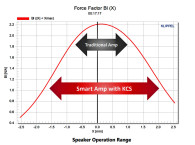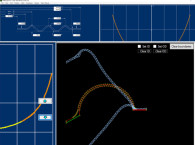
Among the areas we address, speaker design is one of the most fascinating areas for me. I have had the privilege to meet and exchange views with some of the legends in electro-acoustic science and also meet with driver and speaker part manufacturers— even manufacturing equipment suppliers — and gain privileged access to industry associations, of which we naturally endorse the role of the Association of Loudspeaker Manufacturing & Acoustics (ALMA) International and its associates.
Through the eyes of many of those industry experts, it’s possible to gain a broader vision on how to approach the art and craft of speaker design. I’ve met brilliant minds that approached their creations based purely on self-acquired knowledge and research, deliberately trying to distance themselves from existing trends and debates. Other similarly brilliant designers base their work on team efforts, industry partnerships, and sometimes market-oriented options to achieve the best economies of scale and sensible solutions for their target consumers. These are the people who I’ve started to categorize as the Wizards and the Cooks.
The categorization is valid for designers targeting the absolute high-end market—where price is not a primary consideration — as well as for mass-market portable PA solutions. I was even more amazed to discover the same “personalities” in speaker designers targeting in-wall and ceiling speakers and studio reference monitors.
 Of course, as anyone can discover by reading some of the industry “bibles” on speaker design — of which I would recommend Vance Dickason’s Loudspeaker Design Cookbook — understanding the basics is essential to achieve the best results. As the vast majority of authors who submit DIY projects to audioXpress will agree, following a recipe is a great way to learn and perfect this craft. It’s no coincidence that Vance’s books are titled “cookbook” or “loudspeaker recipes.” But even Vance Dickason would agree that, once in awhile in the history of loudspeaker design, there are great examples of achievements that seem to defy logic and science. Also, great technology advancements result from “Eureka moments” and those tend to gain more visibility than achievements resulting from pure engineering method and experimentation.
Of course, as anyone can discover by reading some of the industry “bibles” on speaker design — of which I would recommend Vance Dickason’s Loudspeaker Design Cookbook — understanding the basics is essential to achieve the best results. As the vast majority of authors who submit DIY projects to audioXpress will agree, following a recipe is a great way to learn and perfect this craft. It’s no coincidence that Vance’s books are titled “cookbook” or “loudspeaker recipes.” But even Vance Dickason would agree that, once in awhile in the history of loudspeaker design, there are great examples of achievements that seem to defy logic and science. Also, great technology advancements result from “Eureka moments” and those tend to gain more visibility than achievements resulting from pure engineering method and experimentation.In speaker technology, those advancements have proven crucial in areas such as audio electronics and signal processing, material research, and driver design. Still, most loudspeakers combine a solid knowledge of established designs, which can be perfected with the right amount of attention to detail, incremental improvements, and always where possible, specifying new technologies and materials.
audioXpress tries to make that engineering process visible when we publish reviews or R&D stories. We want to address how R&D efforts are combined with sourcing strategic partnerships with suppliers, providing expert advice on innovative solutions and how to customize critical components. Loudspeaker driver companies continuously renew their catalogs of ready-to-use solutions, benefiting from their own research, manufacturing improvements, precision engineering, and sometimes, pure innovation
On the other hand, every time we see a new innovative speaker, we find the usual reference to “custom-made drivers.” And yet, few manufacturers even have the ability to design speaker drivers in-house, let alone have the manufacturing capabilities to turn something simulated in software into a successful working sample.
That’s why it is so important for all speaker designers to understand how suppliers such as speaker driver/transducer manufacturers operate. When approached by a speaker designer with a new project—and a solid business plan—they can act as expert-consultants, working as an extension of the original R&D department.
In speaker design, those partnerships are essential to convert great projects into reality. It’s always remarkable to see apparently simple designs, “cooked” in-house, result in outstanding products.
Sometimes it actually seems like wizardry.







